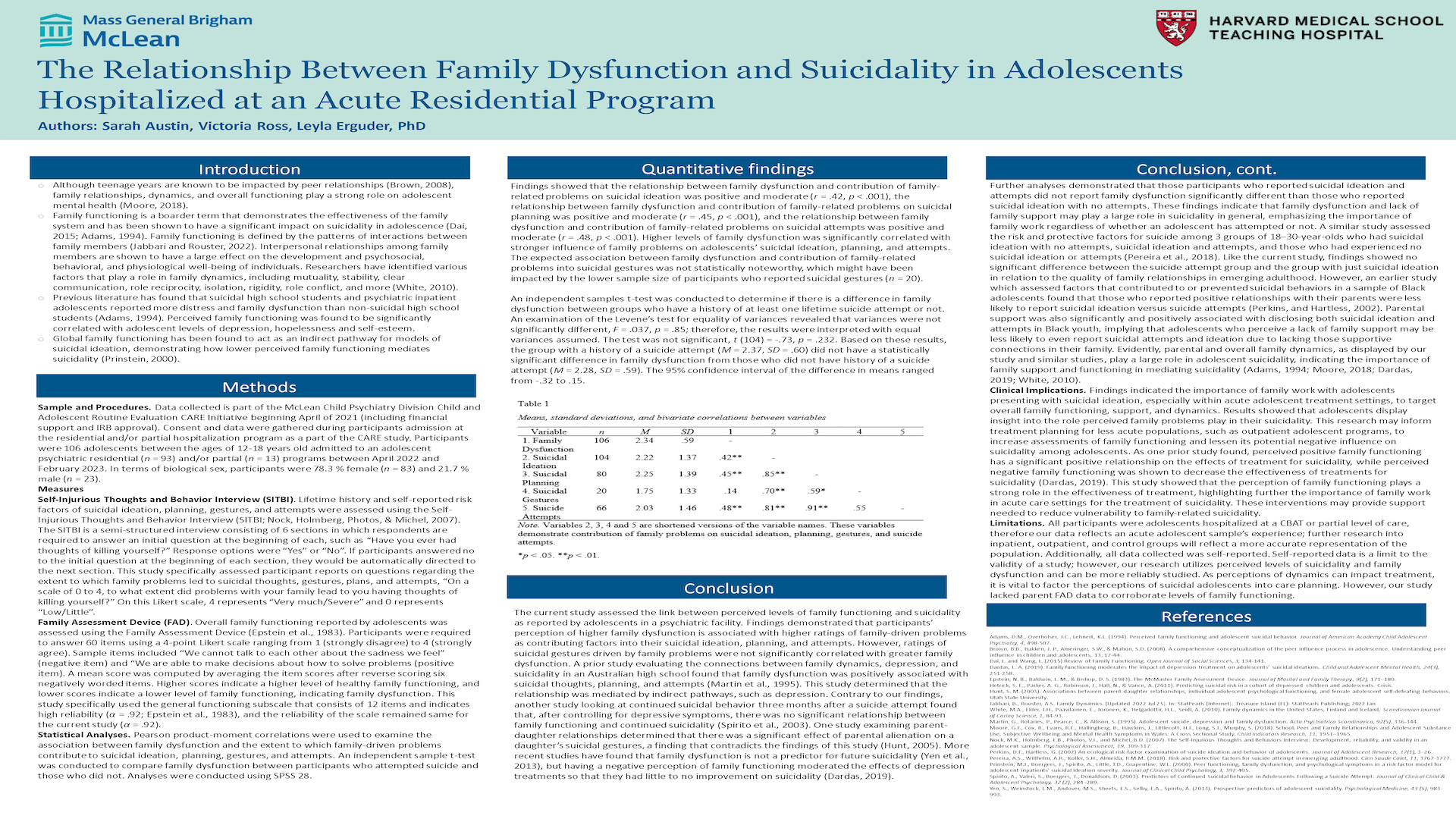Scientific Abstract
Background: Although teenage years are known to be impacted by peer relationships (Brown, 2008), family relationships and dynamics play a strong role on adolescent mental health (Moore, 2018). Family functioning is a boarder term that demonstrates the effectiveness of the family system and has been shown to have a significant impact on suicidality in adolescence (Dai, 2015; Adams, 1994). While previous studies have examined suicidality and family functioning, this study examined the relationship between reported levels of dysfunction as related to rationale behind suicidality in terms of attempts, planning, and suicidal gestures (Prinstein, 2000).
Methods: Measures utilized in this study are the Self-Injurious Thoughts and Behavior Interview (SITBI) to examine self-reported risk factors associated with suicidality and the Family Assessment Device (FAD) to assess the overall family functioning reported by both parents and adolescents.
Participants were a sample from adolescents hospitalized at a CBAT level of care between the ages of 12-18 and their parents. Both parents and adolescents completed the FAD, while adolescents alone completed the SITBI. Results will reveal the correlations between levels of family dysfunction and the level of reported family-related rationale for suicidality. These results will highlight the perceived differences in family functioning by parents and adolescents and the relationship between perceived family dysfunction and adolescent suicidality.
Search posters

